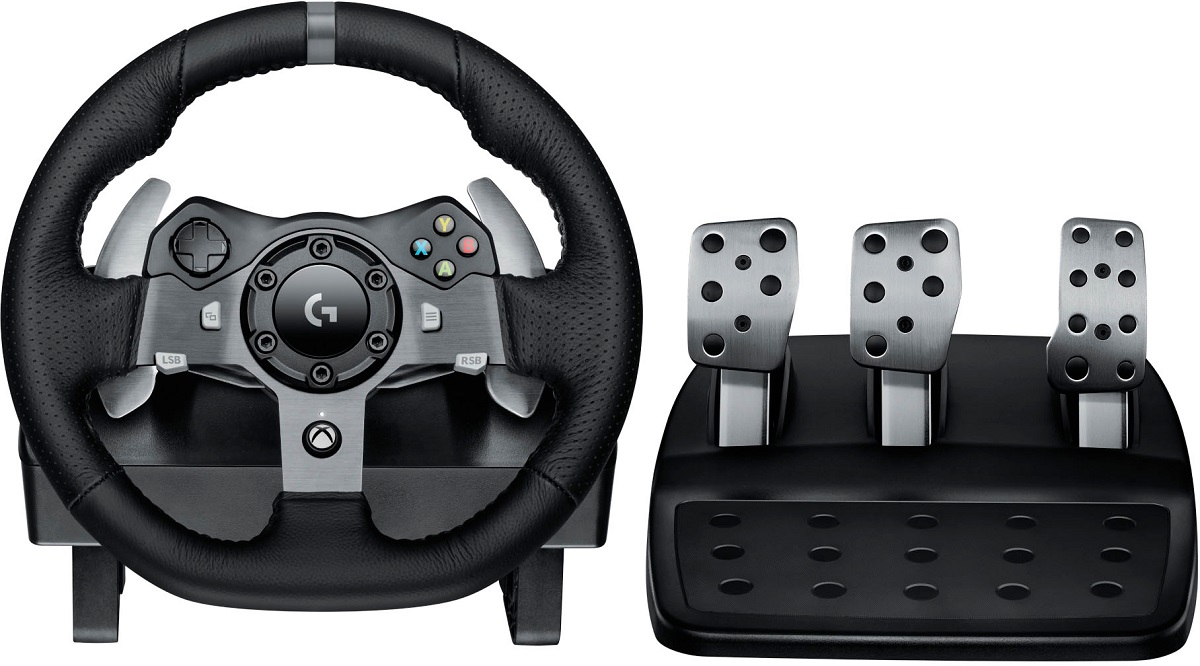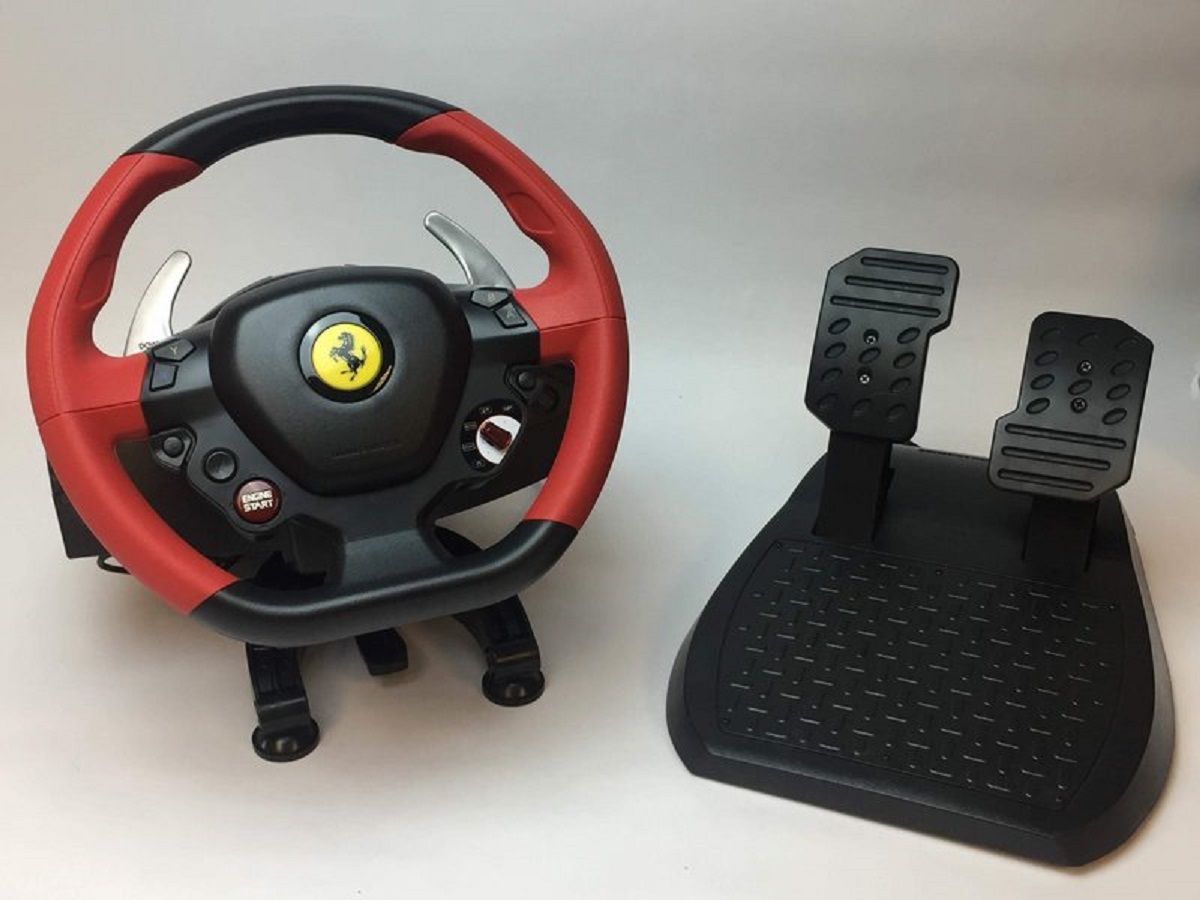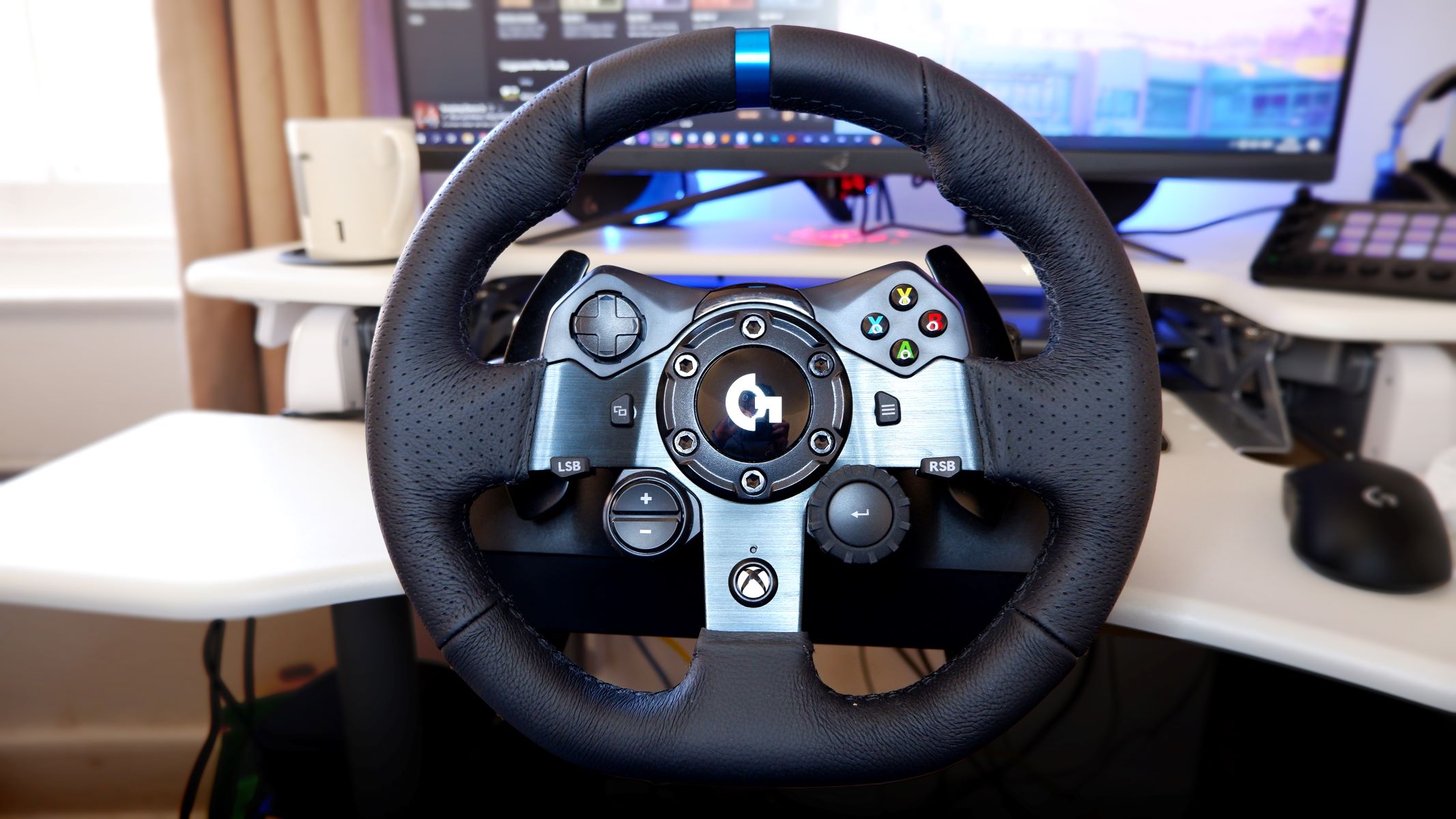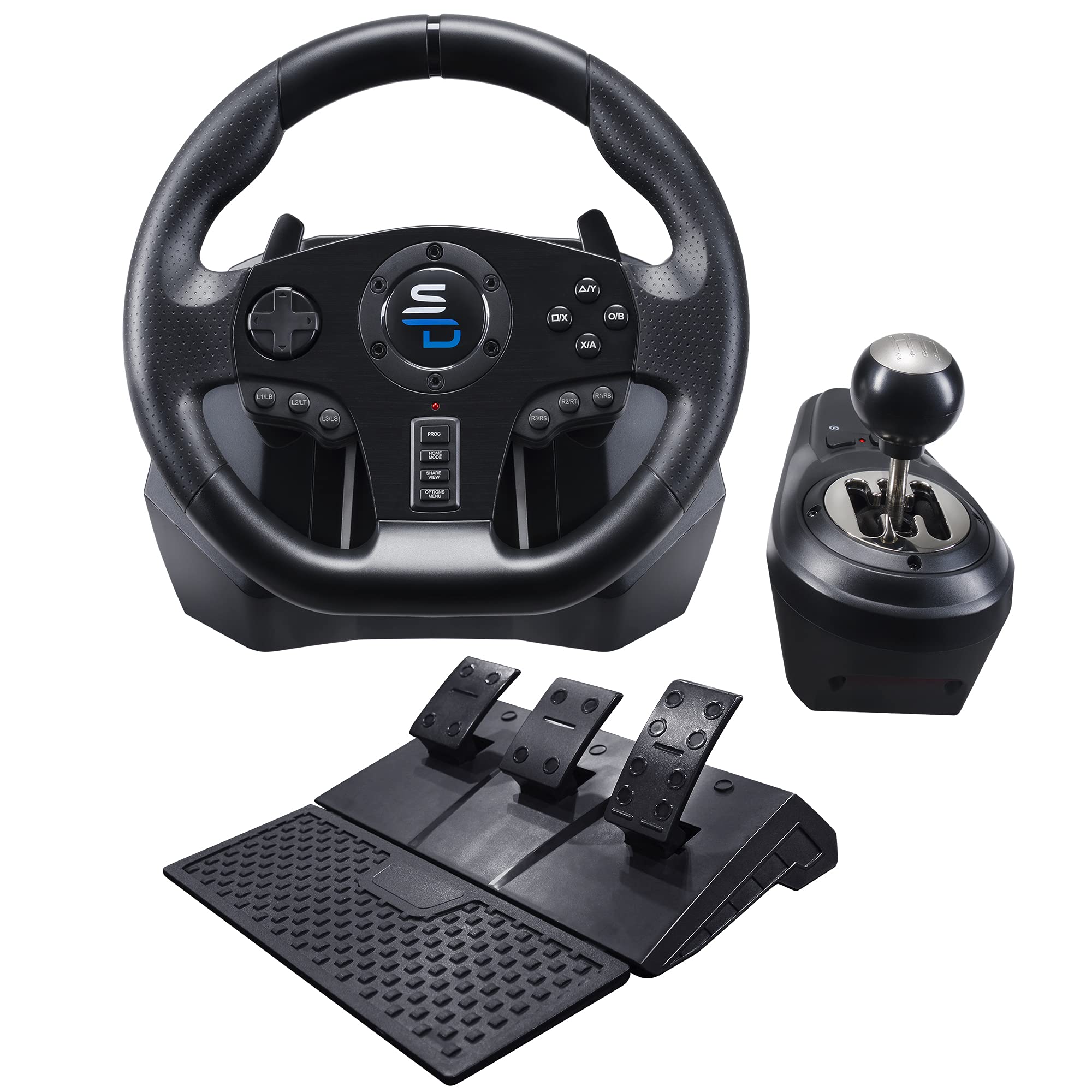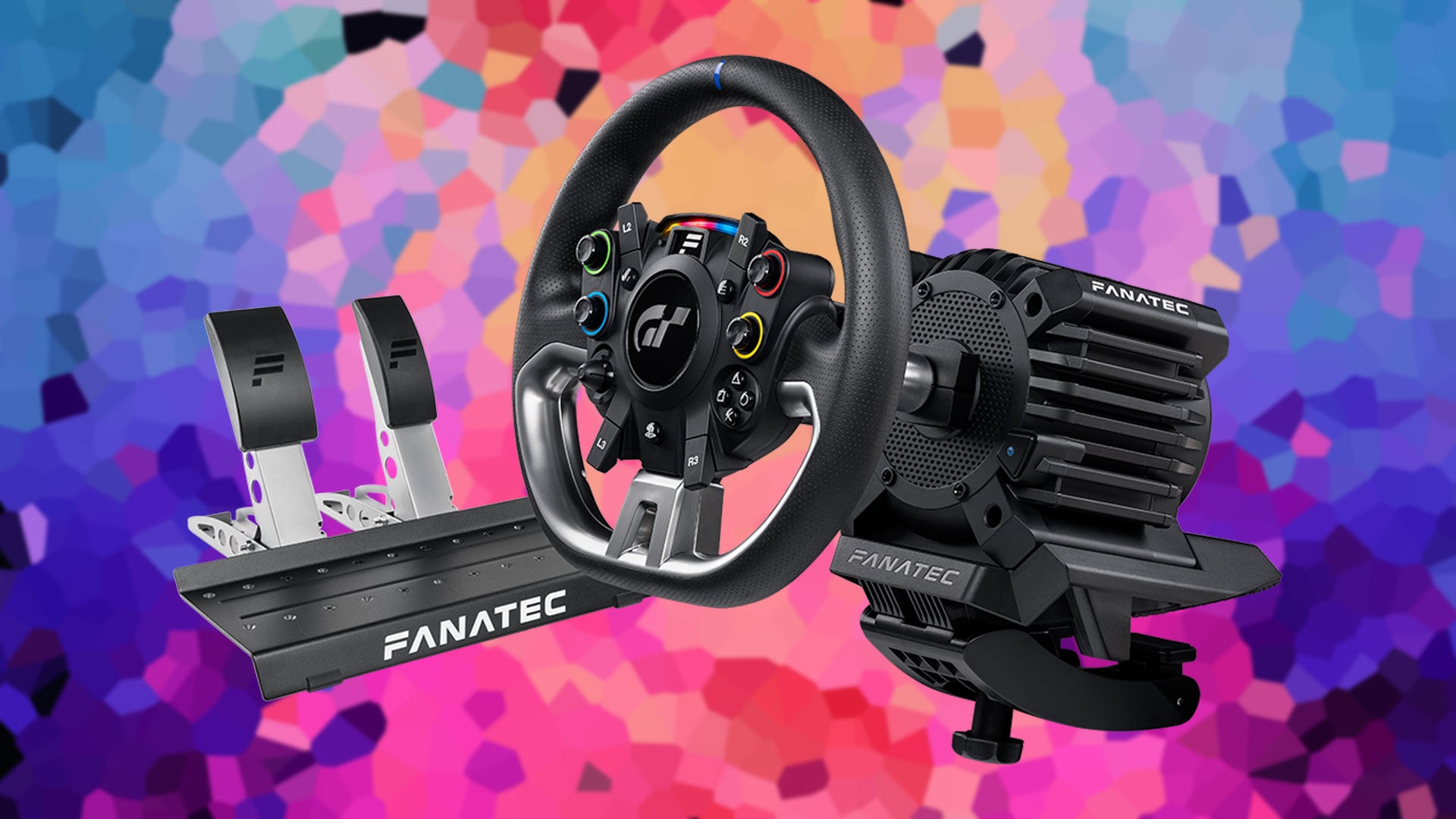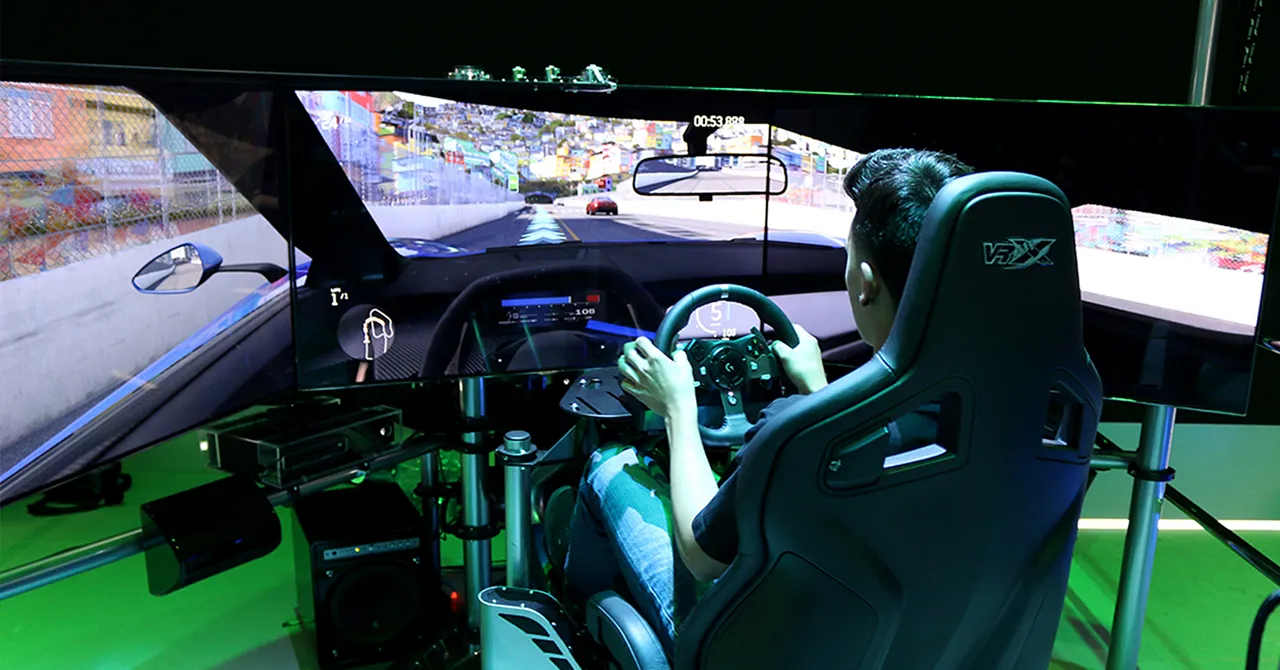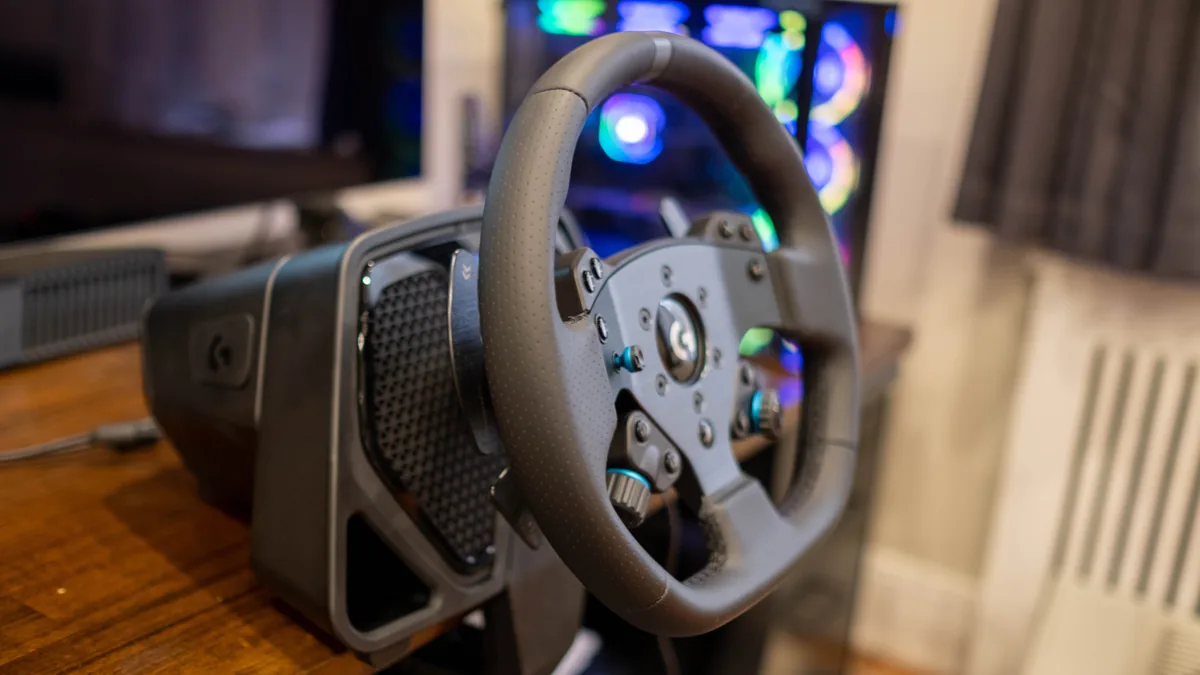Introduction
So, you've got the need for speed, and you're ready to dive into the heart-pounding action of Need for Speed Payback. Whether you're a seasoned racing enthusiast or a newcomer to the adrenaline-fueled world of virtual racing, there's nothing quite like the exhilaration of hitting the virtual tarmac with a racing wheel in hand. The tactile feedback, precision control, and immersive experience offered by a racing wheel can elevate your gameplay to a whole new level, providing a sense of realism that's hard to match with a standard controller. However, getting your racing wheel up and running with Need for Speed Payback might seem like a daunting task, especially if it's your first time delving into the world of peripheral devices for gaming.
Fear not, as this guide is here to walk you through the process of setting up your racing wheel for an optimal Need for Speed Payback experience. From checking compatibility to troubleshooting common issues, we've got you covered every step of the way. By the time you're done reading, you'll be ready to hit the virtual streets with all the advantages that a racing wheel can offer.
Let's dive in and ensure that you're fully equipped to unleash the full potential of your racing wheel in Need for Speed Payback.
Checking Compatibility
Before diving into the installation and setup process, it’s crucial to ensure that your racing wheel is compatible with Need for Speed Payback. Compatibility issues can lead to frustration and hinder your gaming experience, so it’s essential to verify that your specific racing wheel model is supported by the game.
Start by consulting the official list of supported racing wheels provided by the game’s developers. This information is typically available on the official website, community forums, or within the game’s documentation. If your racing wheel is listed as a supported peripheral, you’re off to a great start. However, if your specific model isn’t listed, don’t lose hope just yet. Many racing wheels are compatible with a wide range of games, even if they’re not explicitly listed as supported.
Another valuable resource for checking compatibility is the gaming community itself. Online forums, social media groups, and dedicated gaming communities often feature discussions about peripheral compatibility. Engaging with fellow gamers who have experience with your racing wheel model and Need for Speed Payback can provide valuable insights and potential workarounds if official support is lacking.
Furthermore, some racing wheel manufacturers offer software or firmware updates that enhance compatibility with various games. Visiting the manufacturer’s website and ensuring that your racing wheel’s drivers and firmware are up to date can potentially resolve compatibility issues.
By thoroughly investigating compatibility and leveraging the resources available, you can preemptively address any potential hurdles before delving into the installation and configuration process. With a clear understanding of your racing wheel’s compatibility with Need for Speed Payback, you’ll be better prepared to proceed with confidence and optimize your gaming experience.
Installing the Latest Drivers
Once you’ve confirmed the compatibility of your racing wheel with Need for Speed Payback, the next crucial step is to ensure that you have the latest drivers installed for your peripheral device. Racing wheel manufacturers often release driver updates to improve performance, address compatibility issues, and introduce new features. By installing the latest drivers, you can maximize the functionality of your racing wheel and minimize the likelihood of encountering technical difficulties during gameplay.
Begin by visiting the official website of the racing wheel manufacturer. Navigate to the support or downloads section, where you can search for the latest drivers specifically tailored to your racing wheel model. It’s important to select the drivers that correspond to your operating system, whether it’s Windows, macOS, or another platform.
Before initiating the driver installation process, it’s advisable to uninstall any existing drivers for the racing wheel. This ensures a clean installation and reduces the potential for conflicts between old and new drivers. Once the previous drivers have been uninstalled, proceed to install the latest drivers that you downloaded from the manufacturer’s website. Follow the on-screen instructions provided by the driver installation wizard, and restart your computer if prompted to complete the installation process.
After installing the latest drivers, it’s a good practice to verify that the racing wheel is recognized and functioning correctly. Connect the racing wheel to your computer and check the device manager or the manufacturer’s software utility to confirm that the drivers have been successfully installed and that the racing wheel is detected without any issues.
By proactively updating your racing wheel’s drivers, you can harness the full potential of the peripheral device and ensure seamless integration with Need for Speed Payback. This proactive approach minimizes the risk of encountering compatibility or performance issues related to outdated drivers, allowing you to focus on the thrill of virtual racing without technical distractions.
Configuring the Racing Wheel in Game Settings
With your racing wheel’s compatibility confirmed and the latest drivers installed, it’s time to delve into the game settings of Need for Speed Payback to optimize the configuration for your racing wheel. Customizing the in-game settings to align with your racing wheel’s capabilities can significantly enhance your immersion and control, providing a tailored experience that caters to your preferences and playstyle.
Upon launching Need for Speed Payback, navigate to the game’s settings or options menu. Look for a section specifically dedicated to input devices or controllers. Within this menu, you should find options to configure and calibrate your racing wheel. Depending on the game, you may have the ability to assign specific functions to different buttons, adjust steering sensitivity, fine-tune force feedback settings, and customize other parameters that directly impact your interaction with the racing wheel.
It’s essential to take the time to experiment with these settings and make adjustments based on your personal preferences. Some players prefer a more sensitive steering response, while others may opt for a more gradual and precise control scheme. Additionally, force feedback settings can be tailored to deliver varying levels of resistance and tactile feedback, simulating the nuances of different driving conditions and vehicle characteristics.
Many racing enthusiasts recommend starting with conservative settings and gradually refining them through trial and error. This iterative approach allows you to fine-tune the configuration to suit your individual comfort and performance requirements. As you become more familiar with the nuances of the game and your racing wheel, you can continue to adjust the settings to achieve an optimal balance between responsiveness, realism, and enjoyment.
Furthermore, some racing wheels feature proprietary software that enables advanced customization beyond the in-game settings. Exploring the manufacturer’s software utility can unlock additional configuration options, such as creating custom profiles, adjusting dead zones, and fine-tuning calibration to achieve a tailored experience that aligns with your specific preferences.
By meticulously configuring the racing wheel in Need for Speed Payback’s game settings and leveraging any supplementary customization options provided by the racing wheel’s manufacturer, you can elevate your virtual racing experience to new heights. The ability to tailor the game’s input settings to your racing wheel’s capabilities empowers you to immerse yourself in the high-octane world of Need for Speed Payback with unparalleled precision and control.
Troubleshooting Common Issues
While setting up your racing wheel for Need for Speed Payback, you may encounter common issues that can hinder your gaming experience. By familiarizing yourself with these potential challenges and their corresponding solutions, you can preemptively address any obstacles that arise, ensuring a smooth and enjoyable gameplay experience.
1. Calibration and Sensitivity: If you notice erratic behavior or imprecise control inputs from your racing wheel, recalibrating the device and adjusting sensitivity settings can often resolve these issues. Refer to the manufacturer’s documentation for guidance on recalibration procedures, and experiment with different sensitivity settings in the game’s options menu to achieve optimal responsiveness.
2. Compatibility Challenges: In some cases, despite thorough compatibility checks, you may encounter unexpected compatibility challenges. If your racing wheel isn’t functioning as expected, consider reaching out to the game’s community forums, where fellow players may have encountered similar issues and can offer valuable insights or workarounds.
3. Firmware and Driver Updates: Periodically check for firmware and driver updates for your racing wheel, as well as any relevant updates for Need for Speed Payback. Keeping both the racing wheel’s software and the game up to date can mitigate potential compatibility issues and ensure optimal performance.
4. Force Feedback Configuration: If the force feedback effects from the racing wheel feel excessive, unnatural, or inconsistent, revisiting the force feedback settings in the game and the racing wheel’s proprietary software can help fine-tune the tactile feedback to better match your preferences and enhance immersion.
5. USB Port Selection: Some racing wheels may exhibit connectivity issues or intermittent functionality when connected to certain USB ports. Experiment with different USB ports on your computer to determine if the issue is related to a specific port or USB controller. Additionally, using a powered USB hub can provide stable power delivery to the racing wheel, potentially resolving connectivity issues.
6. Input Lag and Latency: If you experience noticeable input lag or latency between your racing wheel inputs and the game’s response, optimizing your computer’s performance, closing background applications, and ensuring that the racing wheel is connected directly to a USB port (rather than through a hub or extension) can help minimize latency and enhance responsiveness.
By proactively addressing these common issues and leveraging the troubleshooting strategies outlined above, you can overcome potential obstacles that may arise during the setup and usage of your racing wheel with Need for Speed Payback. This proactive approach empowers you to maintain an optimal gaming experience, free from technical impediments that could detract from your enjoyment of the high-speed thrills offered by the game.
Conclusion
Congratulations! You’ve successfully navigated the process of setting up and optimizing your racing wheel for an exhilarating Need for Speed Payback experience. By following the steps outlined in this guide, you’ve equipped yourself with the knowledge and tools to ensure that your racing wheel seamlessly integrates with the high-speed action of the game, providing unparalleled immersion and control.
From the initial compatibility checks to the meticulous configuration of in-game settings, you’ve embarked on a journey that empowers you to harness the full potential of your racing wheel. The attention to detail and proactive troubleshooting strategies discussed in this guide serve as valuable resources, allowing you to preemptively address common issues and maintain a smooth, uninterrupted gaming experience.
As you immerse yourself in the adrenaline-fueled world of Need for Speed Payback, the tactile feedback, precision control, and immersive realism offered by your racing wheel will undoubtedly elevate your gameplay to new heights. The ability to customize and fine-tune the interaction between your racing wheel and the game empowers you to tailor the experience to your preferences, ensuring that every twist, turn, and straightaway is met with precision and excitement.
Remember, the journey doesn’t end here. Periodically revisiting the configuration settings, staying informed about driver and firmware updates, and engaging with the gaming community can further enhance your racing wheel experience and keep you at the forefront of virtual racing technology.
Now, with your racing wheel primed and ready, it’s time to hit the virtual streets, unleash the power of your finely-tuned machine, and immerse yourself in the heart-pounding action of Need for Speed Payback. Whether you’re chasing down rivals, executing precision drifts, or pushing the limits of speed, your racing wheel is your trusted companion, delivering an unparalleled level of control and immersion as you conquer the virtual asphalt.







